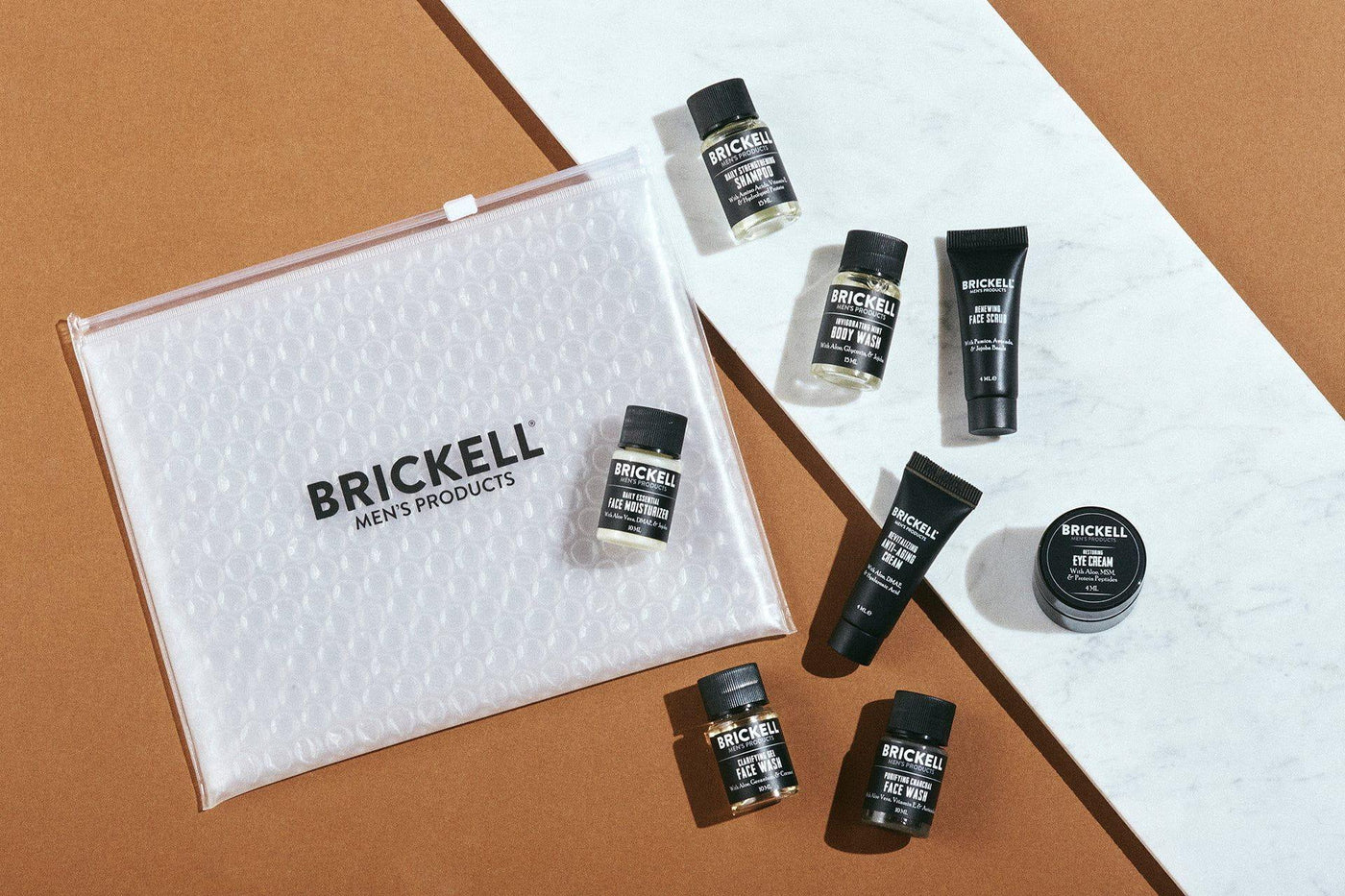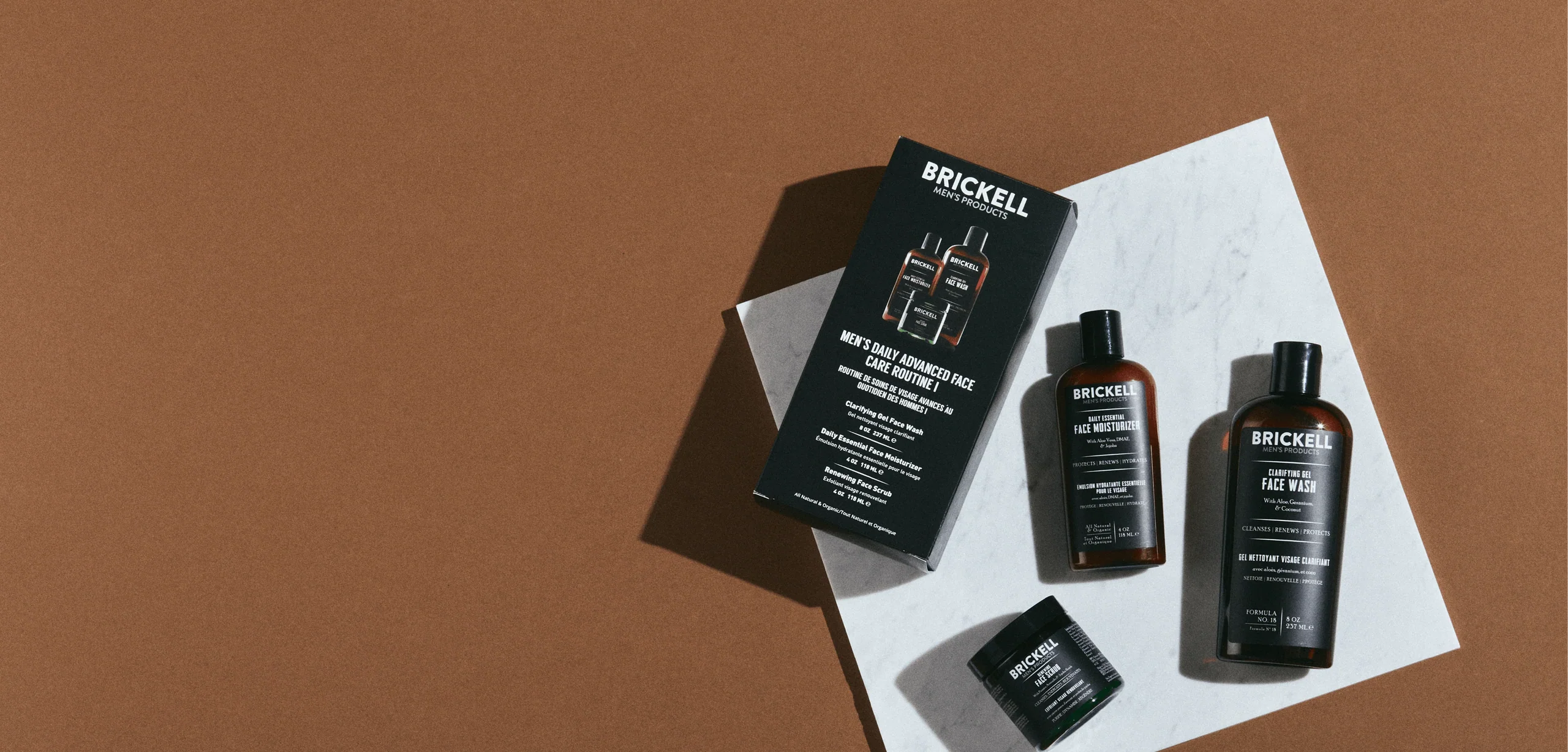The Grooming Manual
How to Prevent Acne After Shaving

For most men, shaving is a daily (or close to it) habit. Maybe it seems simple - you put cream on your face, you shave, and you’re done. Unfortunately, it’s not always that easy.
Poor shaving techniques and habits cause all kinds of skin issues - razor burn, razor bumps, redness, itch, irritation, and acne. And none of them are pleasant.
But with a little knowledge, the right products, and skin-saving techniques, you’ll be able to prevent acne after shaving and any other irritation that might get in your way.
What Is Acne?
Acne - blemishes that include pimples, zits, whiteheads, and blackheads - forms when your pores get clogged and infected with bacteria. This leads to the redness and inflammation that you associate with an acne breakout.
How Shaving Can Cause or Worsen Acne
When your skin is affected by acne, it gets irritated and inflamed. That presents a problem when it’s time to shave, since both issues work against the smooth experience you’re trying to have.
Shaving is an inherently skin irritating process; add acne and you’ve get a recipe for skin disaster. But not if you know how to treat it right.
Are Razor Bumps the Same as Acne?
No - razor bumps and acne are not the same.
One of the most common forms of shave irritation is ingrown hairs. As your facial hair regrows after a shave, it sometimes gets stuck under the skin. This is especially common for men with tight, curly facial hair since it can more easily get trapped beneath the skin. When this happens, it irritates the hair follicle and creates red blemishes often called “razor bumps”.
So razor bumps are irritated ingrown hairs.
While razor bumps and acne are not one and the same, they do cause similar kinds of irritation.
- Both form itchy, irritating red bumps.
- Both can be caused or made worse by shaving.
But since acne affects the pores and razor bumps affects the hair follicles, treating and preventing each requires different strategies.
How to Prevent Acne and Razor Bumps After Shaving
Wash Your Face with Warm Water
If your goal is to prevent razor bumps and acne after shaving, never shave without first washing your face. This gets rid of dirt, bacteria, and oil that can clog your pores and lead to acne. It helps you start with a clean slate - and ensures that everything goes smoothly afterward.
For guys with acne prone skin, use our Acne Controlling Face Wash. It leverages AHA’s and BHA’s to improve cellular turnover and keep your pores clear. This treats any current blemishes and flushes out all the junk that could lead to breakouts in the future.
Even if you don’t have regular issues with acne, it’s still best practice to wash before you shave. Use this guide to help identify your skin type and make sure your face wash is right for your skin.
Exfoliate
Next, use face scrub to exfoliate your skin. This process eliminates dead skin cells, softens your facial hair, deep cleans pores, and generally prepares your skin for a top notch shave. It also reduces the chances of developing acne after shaving.
One note of caution: exfoliation can cause irritation if done too often, done too forcefully, or applied to dry skin. So if you have some oily spots and some dry spots, avoid the dry areas when exfoliating. Only use face scrub every other day; if you shave daily, you don’t always need to exfoliate.
Our Renewing Face Scrub is effective yet gentle enough for all skin types. Its jojoba beads and pumice particles clean deep and get rid of dead skin without the harsh irritation that comes with many products.
Lubricate Your Skin Thoroughly
Pressing metal to your skin and cutting facial hair is inherently irritating. But it can be a far more pleasant experience if you use hydrating products beforehand to lubricate your skin.
Warning: Never dry shave.
No matter how much of a rush you’re in. No matter how little stubble you have. Don’t do it. Dry shaving is extremely irritating and is almost guaranteed to worsen acne, razor bumps, redness, and itch.
Many men have gotten into the habit of using a foaming shave cream. While this helps some, it’s not as effective and protective as a thicker, lotion-like shave cream. That’s why our Smooth Brushless Shave Cream is formulated with glycerin, aloe, and jojoba - the last of which is especially beneficial since it mimics your skin’s natural oils.
Another less common option - but one that can massively improve your experience - is shave oil. It keeps your skin slick and doesn’t get washed away by the water as your rinse your blade between strokes.
Our Hybrid Glide Shave Oil was made to complement your shave cream or work alone. Its natural oils soften and slick the skin, making shaving much easier.
You can use shave cream, shave oil, or both to ensure your skin stays as lubricated as necessary to prevent acne and razor burn. Since every guy is different, it may take some experimentation to find the right method for you. You can use one or the other or both - whatever works best for your skin.
Use a Clean, Sharp Razor
Worried that a sharp razor is more likely to cause cuts? Relax, the opposite is actually true. Dull razors require multiple passes, tug at your skin, and worsen shave irritation.
Used, dirty razors are a major culprit in causing acne after shaving. Why?
If you’re not able to thoroughly clean your razor, it will trap stubble, shave cream residue, dead skin cells, and bacteria between its blades. If all that junk stays lodged in there - and worse, stays damp for hours after you shave - you’re asking for bacterial growth.
The next time you shave with that nasty razor, you’ll be exposing your skin, pores, and hair follicles to acne and irritation causing bacteria. Not good.
So make sure you’re always using a sharp, clean blade in order to prevent acne and other irritation after shaving. Regardless of whether you reach for an electric razor, a cartridge razor, or a safety razor, cleanliness is essential. If you are able to reuse your blades, take the time to clean them thoroughly and allow them to dry entirely between uses.
Shave with the Grain
Shaving with the grain of your facial hair growth - not against it - will help prevent ingrown hairs. You might not get quite as close and smooth of a shave, but your efforts will go a long way towards reducing irritation.
Shaving against the grain often means cutting hairs down below the surface of your skin. That makes them much more likely to become ingrown. Do yourself a favor, treat your skin right, and prevent needless irritation by shaving with the grain in long, smooth strokes using a clean razor.
Use Aftershave That Fights Bacteria
Once you’re all done shaving, rinse your face with warm (not scalding hot) water to remove hairs and shave cream. Now, fresh and clean, you’re ready to finish up with aftershave.
An aftershave with naturally antibacterial ingredients - like our Instant Relief Aftershave - will soothe your skin and prevent acne from developing. It’s alcohol-free, so you get a calming sensation instead of the tight, stinging feel of alcohol.
Beware of alcohol in your personal care products. It dries out your skin, can cause redness and irritation, and tends to burn. That’s not a good thing - especially post-shave, your skin wants to be cooled and soothed.
Use Toner to Reduce Inflammation
The soothing, antiseptic properties of skin toner make it an ideal follow up for guys who want to prevent acne after shaving. You don’t have to use it immediately to see results. You may want to wait until later in the day.
If your skin feels irritated, dry, or itchy, apply a couple sprays of our Balancing Toner. It’s made with cucumber, witch hazel, peppermint, and aloe - so it’s refreshing, cooling, and oil-reducing. All those elements contribute to calm, non-irritated skin and acne prevention.







